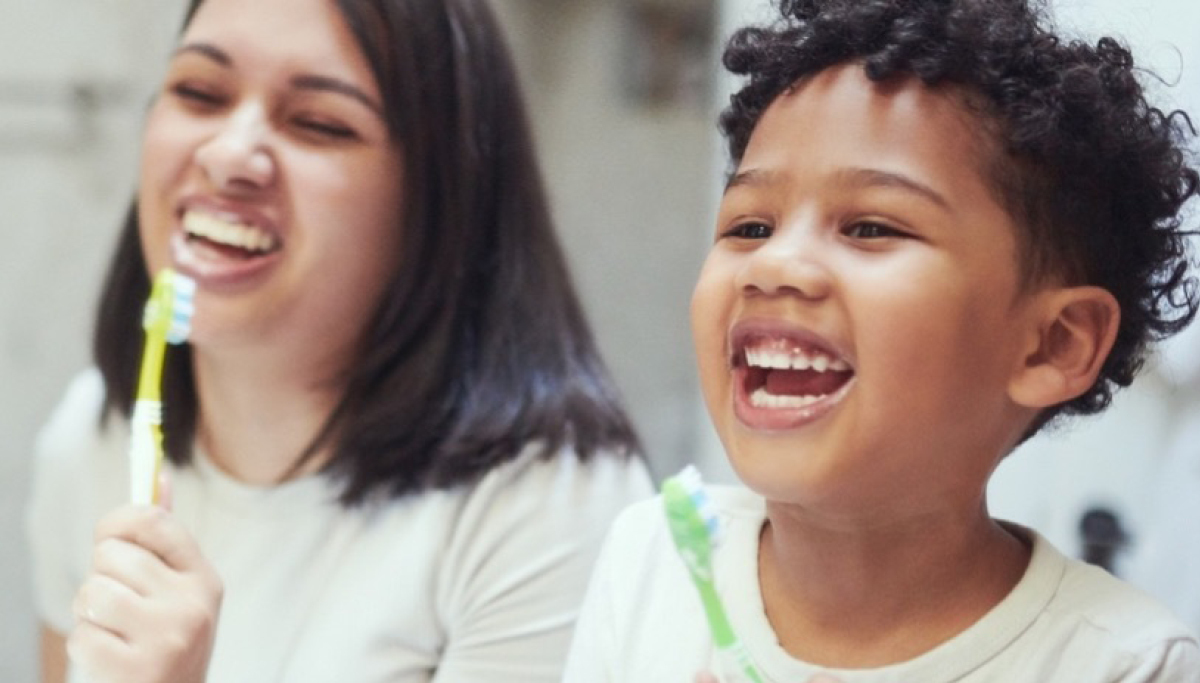Cavities are a big problem for little ones’ teeth
It doesn’t take long for some children to develop cavities — even before all their other baby teeth come in. More than 1 in 5 children between the ages of 2 and 5 have at least one cavity in their baby teeth.
Cavities, also known as tooth decay, are one of the most common chronic diseases among children. The good news is that cavities are nearly 100% preventable. Here’s how to keep your young child’s smile healthy from the very start.
The importance of preventing cavities in babies and toddlers
Healthy teeth help children chew, speak and smile. Tooth decay can make it difficult for young children to perform these functions well.
Baby teeth also hold space for adult teeth to come in correctly. Cavities can lead to crowding or crookedness in the adult teeth developing beneath baby teeth.
If cavities in children go untreated, they can cause pain, infections, and problems learning.
How cavities form in young ones
Cavities are caused by bacteria in the mouth that produce acid that attacks teeth. These bacteria feed on sugary or starchy foods and drinks that linger on your child’s teeth.
A frequent cause of more severe decay, known as baby bottle tooth decay, develops when an infant or toddler frequently consumes drinks containing sugar — including milk — for long periods of time.
The bacteria that causes tooth decay can also get in children’s mouths when it is passed from a caregiver through saliva.
Follow these tips to help prevent cavities in infants and toddlers
Supply them with healthy drinks and food
Give newborns only breast milk, formula, or water to drink. Don’t put a baby to bed at nighttime or naptime with a bottle of milk, juice or other liquids that contain sugar. And don’t let toddlers walk around with a bottle of any liquid that contains sugar.
As children begin consuming solid food, make sure they eat a balanced diet with plenty of fruits, vegetables and calcium-packed foods such as milk, yogurt and cheese. Avoid or limit foods and drinks that contain a lot of sugar or carbohydrates.
Avoid passing bacteria to your child
Sharing isn’t always caring — at least when it comes to spreading mouth germs that can cause cavities. Make sure not to share forks, spoons, food, and straws. Avoid cleaning a pacifier with your mouth. And continue to practice good dental hygiene yourself by brushing twice a day for at least two minutes and flossing daily. This reduces your risk of passing bacteria to your children.
Start a good daily routine for your child’s smile
Even before teeth come in, wipe your infant’s gums with a clean, damp cloth after eating and drinking. Once the first tooth appears, use a soft-bristle toothbrush with a rice-sized amount of fluoride toothpaste. Brush in soft, gentle circles at least daily. By age 3, you can use a pea-sized amount of fluoride toothpaste. When two teeth begin touching, start flossing between them. Consult with your dentist about what is best for your child.
Visit the dentist by age 1
Make sure your child sees a dentist within six months of getting their first tooth and no later than their first birthday. The dentist will:
- Check for cavities
- Show you how to brush your baby’s teeth
- Make sure the child’s teeth are developing normally
- Provide advice about food, drinks, and fluoride options

